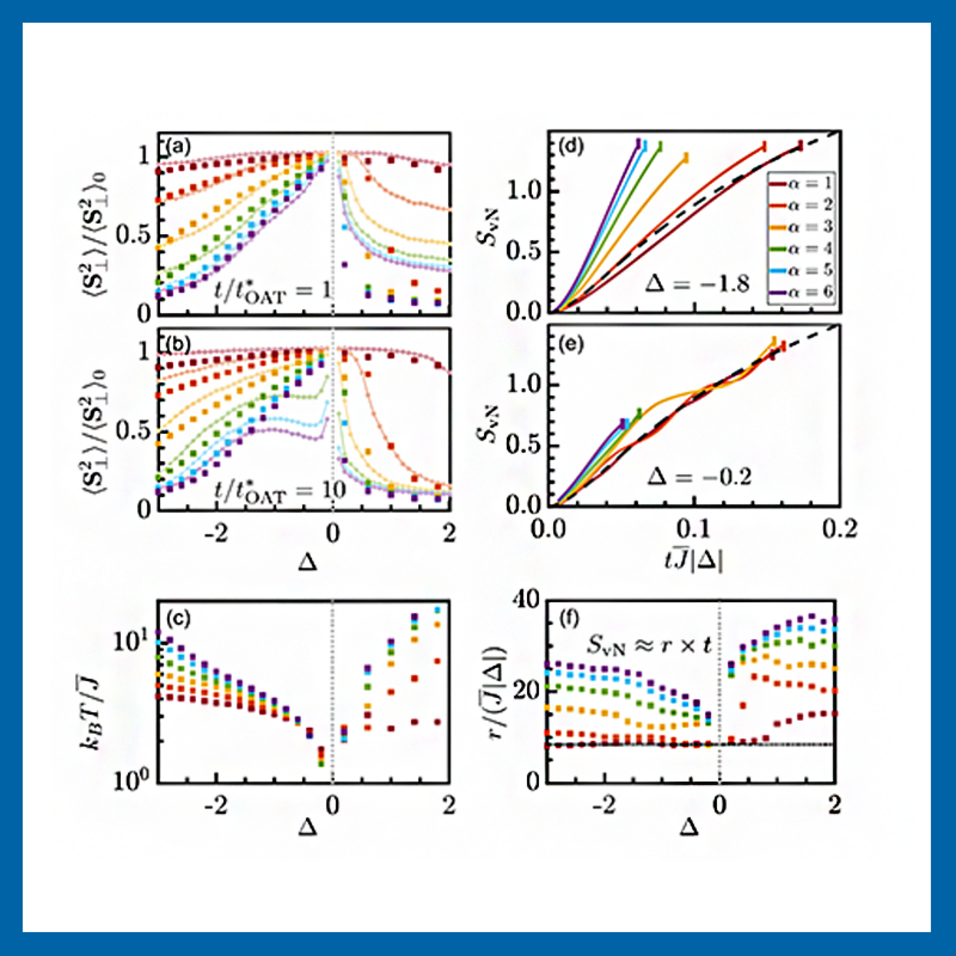Only three months after a work on how to detect emergent symmetries, the paper "Validating Phase-Space Methods with Tensor Networks in Two-Dimensional Spin Models with Power-Law Interactions" has now also been published in Physical Review Letters [Phys. Rev. Lett. 131, 150401 (2023)]. For more info on this work by Mingru, who has just recently moved from our group to the Max Planck Institute of Quantum Optics, and her co-authors Sean R. Muleady, Steven R. White, and Ana Maria Rey, take a look at the abstract below, at the open-access version on arXiv or at the published paper in Physical Review Letters' online journal.
Abstract: Using a recently developed extension of the time-dependent variational principle for matrix product states, we evaluate the dynamics of 2D power-law interacting XXZ models, implementable in a variety of state-of-the-art experimental platforms. We compute the spin squeezing as a measure of correlations in the system, and compare to semiclassical phase-space calculations utilizing the discrete truncated Wigner approximation (DTWA). We find the latter efficiently and accurately captures the scaling of entanglement with system size in these systems, despite the comparatively resource-intensive tensor network representation of the dynamics. We also compare the steady-state behavior of DTWA to thermal ensemble calculations with tensor networks. Our results open a way to benchmark dynamical calculations for two-dimensional quantum systems, and allow us to rigorously validate recent predictions for the generation of scalable entangled resources for metrology in these systems.
This work has received support through the ERC grant SEQUAM.
Calculations were performed on the Vienna Scientific Cluster (VSC).

